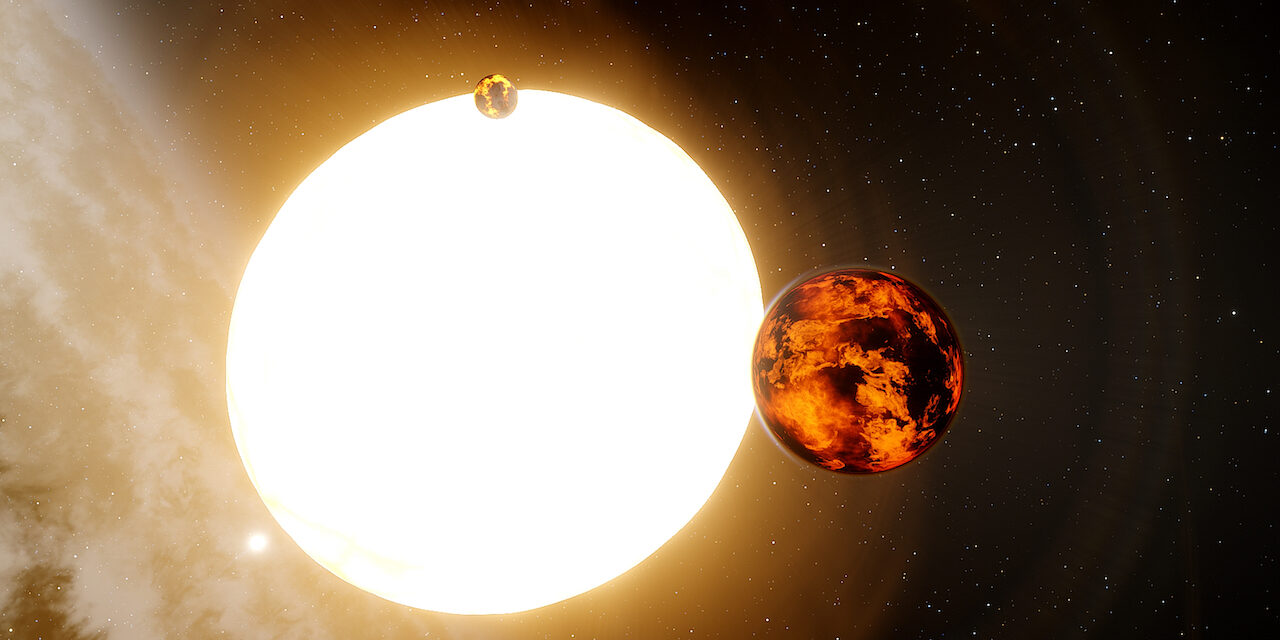The Twinkle satellite was initially conceived for exoplanet spectroscopy however, its specifications have made it applicable to a number of other science cases:
- Exoplanet Photometry
- Minor Solar System Bodies: Asteroids and Comets
- Major Solar System Bodies: Planets and Moons
- Stars
An overview of the investigation by Billy Edwards et. al into Twinkle’s ability for these cases are given here. The full papers can be found in Twinkle’s scientific publications.
Twinkle has a telescope aperture of 0.45m and wavelength range as specified below. The mission is currently undergoing a final review of its design and full details of the latest specifications can be found in the technical publications.
| Channel | Wavelength | Resolution |
|---|---|---|
| Visible | 0.4-1μm | R=60 |
| Infrared 1 | 1.3-2.4μm | R=60 |
| Infrared 2 | 2.4-4.5μm | R=250 |
As Twinkle is an on-demand observatory for the astrophysics community, telescope time can be freely allocated across the various science cases dependent on the users’ observational preferences.
Exoplanet Spectroscopy
Twinkle will perform high-resolution spectroscopy of exoplanets with a wavelength range of 0.4-4.5μm. Spectroscopic measurements will examine the major species present in exoplanet atmospheres and constrain lower abundance molecules.
Twinkle’s wavelength range contains absorption features from a wide variety of molecules including H20, carbon-bearing molecules CO2, CO, CH4, C2H2, C2H4, C2H6, exotic metallic compounds, TiO, VO, SiO, TiH and nitrogen/sulphur-bearing species H2S, SO2, NH3 and HCN. The instrument’s spectral resolving power can allow the detection of many trace gases, the precision to which these are resolved is dependent on the number of transits observed.
Observations in the visible spectrum can be used to measure planetary albedo, Rayleigh scattering and the detection and characterisation of clouds. Twinkle’s wide spectral range will also be useful in the search for condensates or hazes in exoplanet atmospheres.
Exoplanet Photometry
Photometry with Twinkle in the optical and infrared can be used to refine planetary and orbital parameters. Twinkle will be able to search for transit time variations (TTVs) and transit duration variations (TDVs). TTV measurements are beneficial for finding additional planets within systems and constraining planetary parameters such as masses and orbits. Combining TTV and TDV signals is crucial in the search for exomoons.
The ability of Twinkle to perform these detections will depend on the cadence of the observations. Twinkle will be capable of varying its cadence to reflect the brightness of its target and a range of cadence values, from less than 30 seconds, to a few minutes will be achievable.
Twinkle’s photometric ability to obtain near-infrared light curves will also be useful for studying limb darkening and stellar activity. Observations in the near infrared are expected to exhibit highly reduced distortion compared to visible wavelengths. Furthermore, eclipse photometry in the visible and infrared will provide insight into the bulk temperature and albedo of the planet.
Minor Solar System Bodies
Asteroids
Due to Twinkle’s spectral coverage, position outside the Earth’s atmosphere and instrument performance, Twinkle is well suited to obtaining near-infrared data for the small bodies of the Solar System.
A strong potential contribution to small bodies science with Twinkle is the opportunity to investigate the composition of the primitive asteroids, that exhibit features associate with hydration such as water-ice, hydroxyl, silicate minerals and organics. The ability to obtain spectra outside the water-rich atmosphere of Earth removes the severe limitation faced by ground-based observatories in obtaining such measurements.
Twinkle observations can also be very valuable for studying stony asteroids, as it will be able to look for rotational variation in asteroid spectra. Again, this is currently inhibited by the Earth’s atmosphere which generates spectral variations similar to what is expected for small bodies.
Around 1000 Main Belt asteroids brighter than M=14 enter Twinkle’s field of regard, as well as some tens of outer and inner belt asteroids over a period of one year. Simulations with current instrument specifications show that spectra at Twinkle’s highest resolution, with a signal to noise ratio of greater than ten can be obtainable for asteroids brighter than M=14 in an exposure time of 100s.
Comets
Twinkle will have the capability of observing the comae of bright comets and will be able to provide valuable data on their presence of water-ice. Similar to asteroids, telluric water features in spectral data from ground-based observatories currently prevent a full characterisation of comet comae.
In additional to water-ice features, Twinkle has the opportunity to detect water vapour (2.7μm), organics (3.3 -3.6μm) and CO2 (4.3μm) as emission features in comae. Measurements of the 4.3μm CO2 line can be used to derive overall CO2 abundances which then can constrain overall comet formation.
More than 70 comets brighter than M=14 will enter Twinkle’s field of regard in its first year of observations.
Major Solar System Bodies
Planets and Moons
For the outer planets and their large moons, simulations predict that with short exposure time, high resolution spectra (R~250, λ <2.42μm; R~60 λ >2.42μm) with an SNR>100 can be obtained with Twinkle.
Twinkle’s wavelength coverage contains CO2 ice bands which have been detected in various major bodies including the moons of Jupiter, Saturn and Uranus. Additionally, molecules such as condensed 02 and SO2 may be detectable within this spectral range.
Twinkle’s observations of major bodies will be extremely valuable for understanding the dispersion of water, metals and organics throughout the Solar System, providing insight into planetary formation and evolution. Combining the spectroscopic observations of major bodies with minor bodies will enable a holistic view of the primitive and current state of the solar system.
Stars
Twinkle’s spectral range will allow the monitoring of stellar activity over time, characterisation of flares and the ability to constrain M-dwarf metallicities.
Stellar features such as star spots and faculae may also affect the observed exoplanet transit depth at wavelengths shorter than 2μm. The monitoring of stellar activity should allow these features to be removed, mitigating their impact on exoplanet observations.
